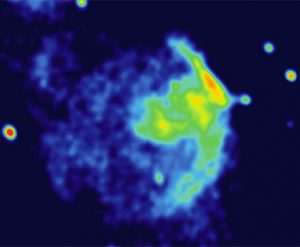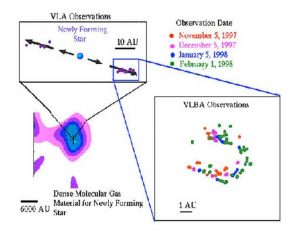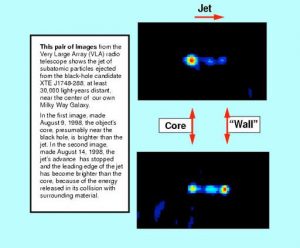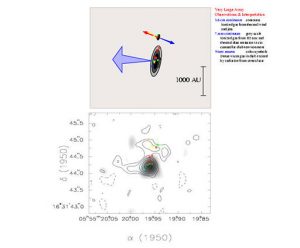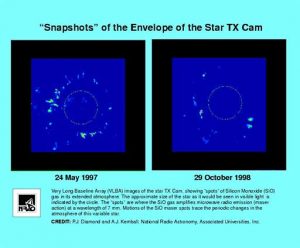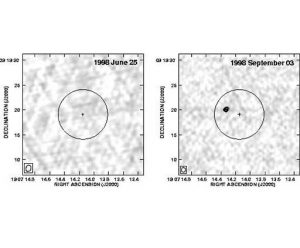Pulsars, those spinning, superdense neutron stars that send powerful lighthouse beams of radio waves and light flashing through the Universe, have been lying about their ages.
VLBA Scientists Study Birth of Sun-like Stars
Three teams of scientists have used the National Science Foundation’s Very Long Baseline Array radio telescope to learn tantalizing new details about how Sun-like stars are formed.
Superfast Cosmic Jet Hits the Wall
A superfast jet of subatomic particles presumably powered by the gravitational energy of a black hole has collided with nearby material, been slowed dramatically and released much of its energy in the collision, radio astronomers report.
Rotating Disk around Young, Massive Star
Astronomers using radio telescopes in New Mexico and California have discovered a giant, rotating disk of material around a young, massive star, indicating that very massive stars as well as those closer to the size of the Sun may be circled by disks from which planets are thought to form.
Movie Star Acting Strangely, Radio Astronomers Find
Astronomers have used the National Science Foundation’s Very Long Baseline Array radio telescope to make the first-ever time-lapse movie showing details of gas motions around a star other than our Sun.
Cosmic Flasher Reveals All!
Astronomers have found evidence for the most powerful magnetic field ever seen in the universe. They found it by observing a long-sought, short-lived afterglow of subatomic particles ejected from a magnetar — a neutron star with a magnetic field billions of times stronger than any on Earth and 100 times stronger than any other previously known in the Universe.






